Outforia Quicktake: Key Takeaways
- Yurts are traditional, circular dwellings originating from Central Asia with wooden frames and thick felt walls
- They are popular in nomadic cultures because they are strong, warm, and portable
- Two main types of yurts are gers, the older design, and bentwood yurts, a more recent design with steam-bent poles
- Modern yurts or Pacific Yurts use waterproof fabrics and modern insulation materials, while retaining the traditional structure
- They can be used for holiday accommodation, temporary or permanent dwellings, and retain cultural significance
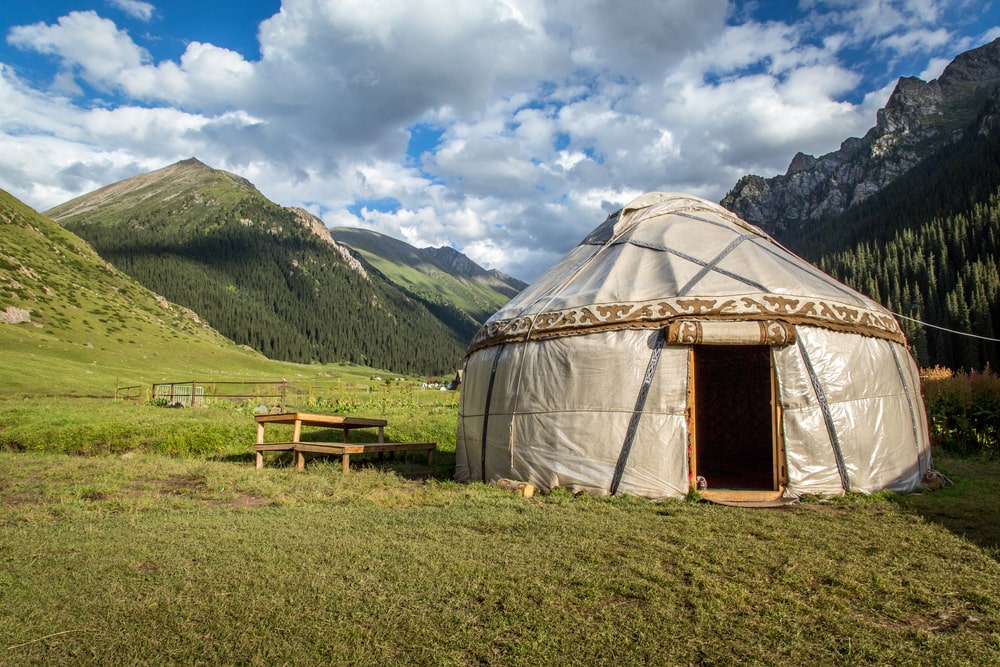
Yurts are traditional dwellings, yet very popular among glampers! They are good alternatives to tent camping and offer unique experience Their circular shape is calming and encourages togetherness.
The thick felt and lattice walls protect you well from the elements. Even better, the center of the yurt holds a fire pit with a bubbling kettle, the smoke coiling up out of the central roof hole.
There are good reasons why this is often the dwelling of choice for nomadic peoples of Asia. Mongol herders need to keep moving with their animals, but also need shelters strong and warm enough to withstand powerful winds and cold temperatures.
History Of The Yurt
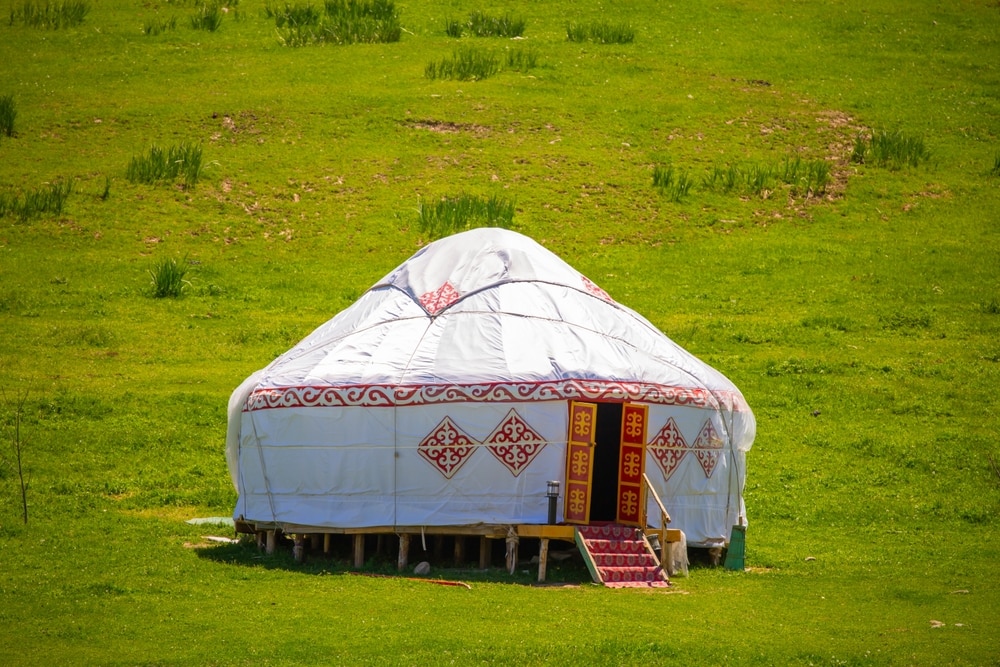
The Greek historian Herodotus made the first account of a yurt in the 5th century before Christ. He was mentioning the ‘tent dwellings’ of the Scythians, a nomadic Central Asian people.
The people of Kazakhstan, Kyrgyzstan, and Turkmenistan also used yurts.
They would hand down the crown of their yurts from generation to generation. These yurt crowns were often heavily decorated with patterns special to each culture. These patterns could represent mythical beasts or the elements.
If you are lucky enough to be shown one of these yurt crowns, treat it with utmost care!
Types of Yurts
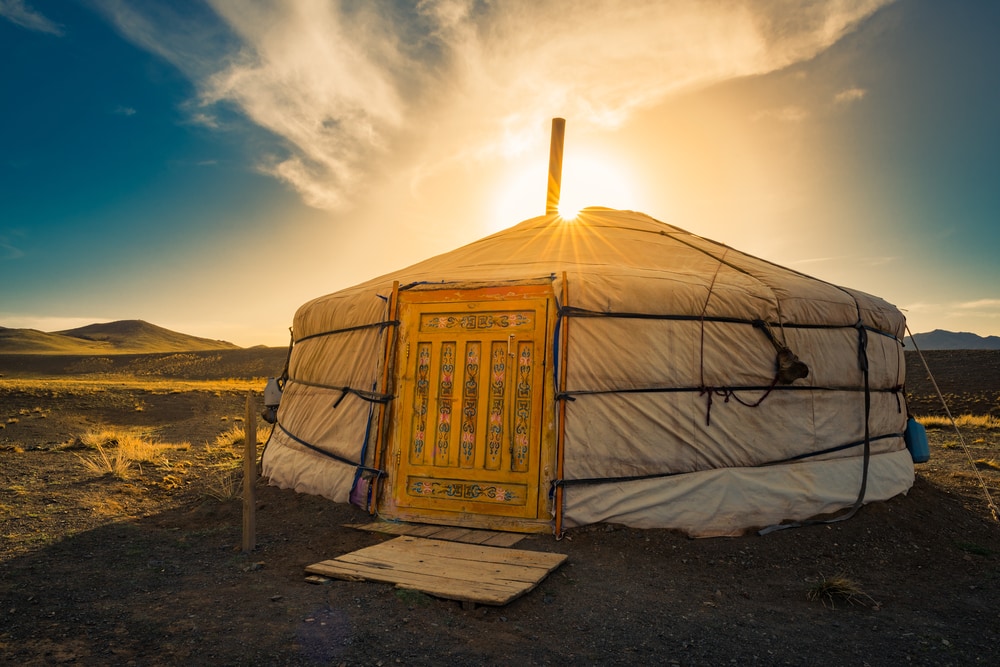
There are two types of classic yurt
A ger is the classic older design of yurt used by Mongolian nomadic tribes people in Asia. This is made of wooden poles radiating from a crown.
In a ger, these poles are straight, and the roof is only gently sloping. The uni (poles) stop at the top of the walls.
A bentwood yurt, or Turkic yurt, is made by steam bending the wooden poles that slot into the crown. It’s also known as an “Uy” in Mongolian. The roof is usually steeper than a ger.
The uni actually extend down into the top part of the walls. Modern yurts, such as the Pacific yurt, make use of this design.
Traditional Mongolian Yurt
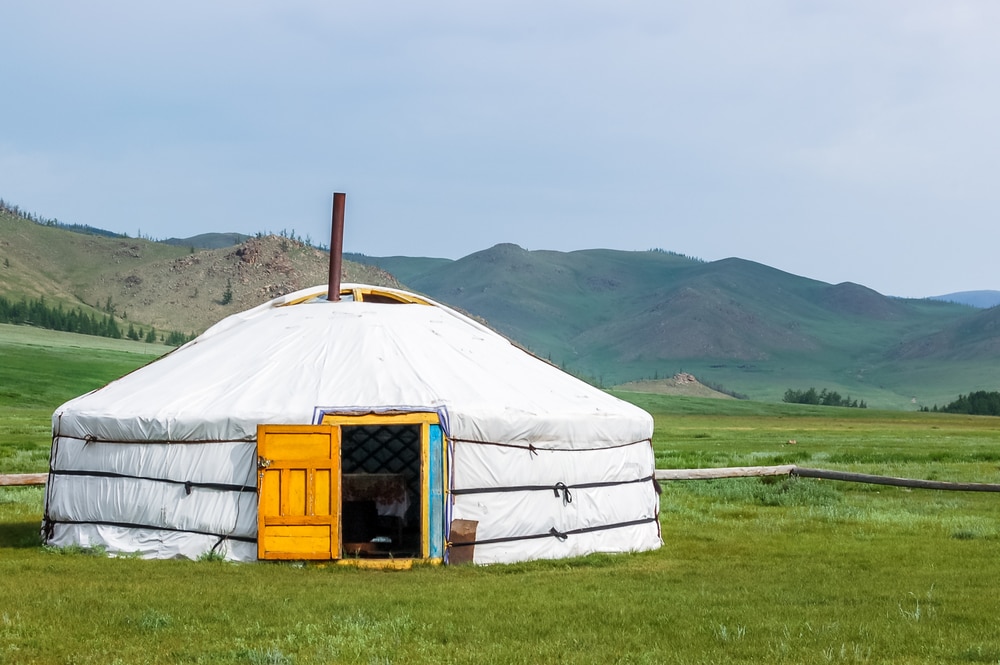
From outside, a traditional Mongolian yurt or ger is white. It has no windows, only a smoke hole in the roof. Windows would let in the strong winds.
The ger walls are wooden lattice with thick layers of felt surrounding them. The one door is traditionally red.
Once you step inside a Mongolian ger, the floor is flattened earth covered by ornately patterned carpets. In the center there is a stove with a chimney that reaches up through the smoke hole in the roof.
The space is large enough to sleep between 5 and 15 people.
Privacy is maintained by partitions made of criss-crossed wood, called khana. These can fold up and be moved easily. They are usually made of light woods like birch, bamboo or willow. The khana are held in place by leather or animal hair straps.
The interior walls often have embroidered or painted folk designs on the thick wool. People sit on cushions and eat or drink off low tables.
Where would I sit if I visited a Mongolian yurt?
Where you sit in a yurt depends on who you are!
The door of a yurt traditionally faces South. The North side is reserved for honored guests, as it is the side most out of the wind!
If you are a woman, you will sit on the Western side with the kitchen. Men will sit on the eastern side with their riding leathers and tools.
Guests, however, will usually go to the left once they go in the door of a homestay ger. The family hosting them will go to the right.
Parts of a Mongolian Yurt
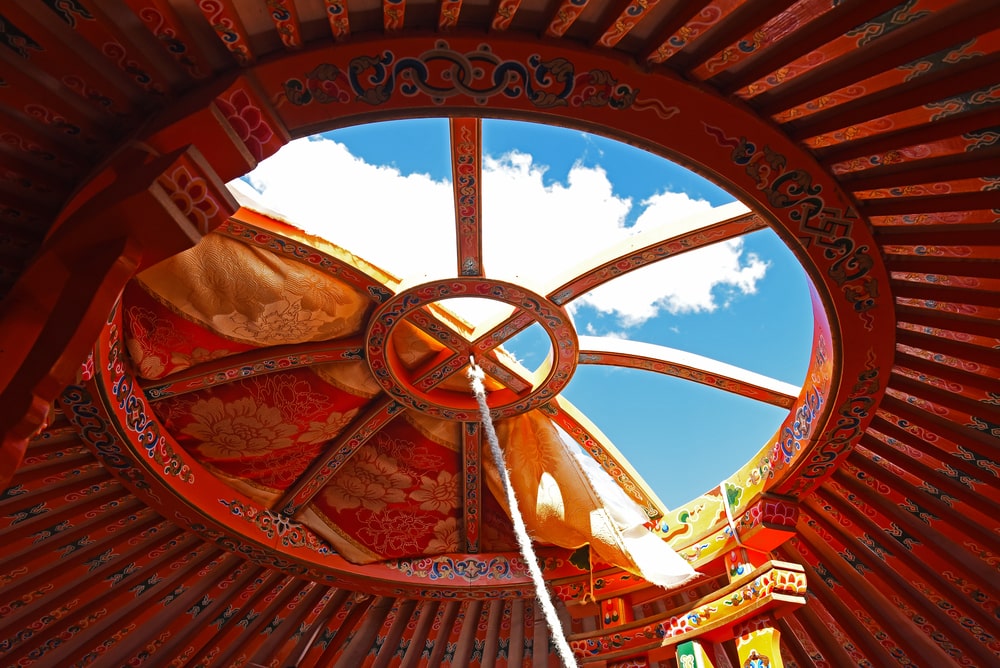
Want to brush up on your Mongolian and impress Mongol tribespeople when you visit a yurt? Learn these words for parts of a traditional ger below.
- Toono – window formed by the central opening around the crown in the roof.
- Ger – Mongolian word for yurt, meaning “home.”
- Uni – the straight poles that slot into the crown and radiate outwards, forming the roof.
- Bagana – columns that support the heavy wooden crown.
- Khana – lightweight wooden partitions that divide spaces in the yurt.
How Can I Experience Life In A Traditional Mongolian Ger?
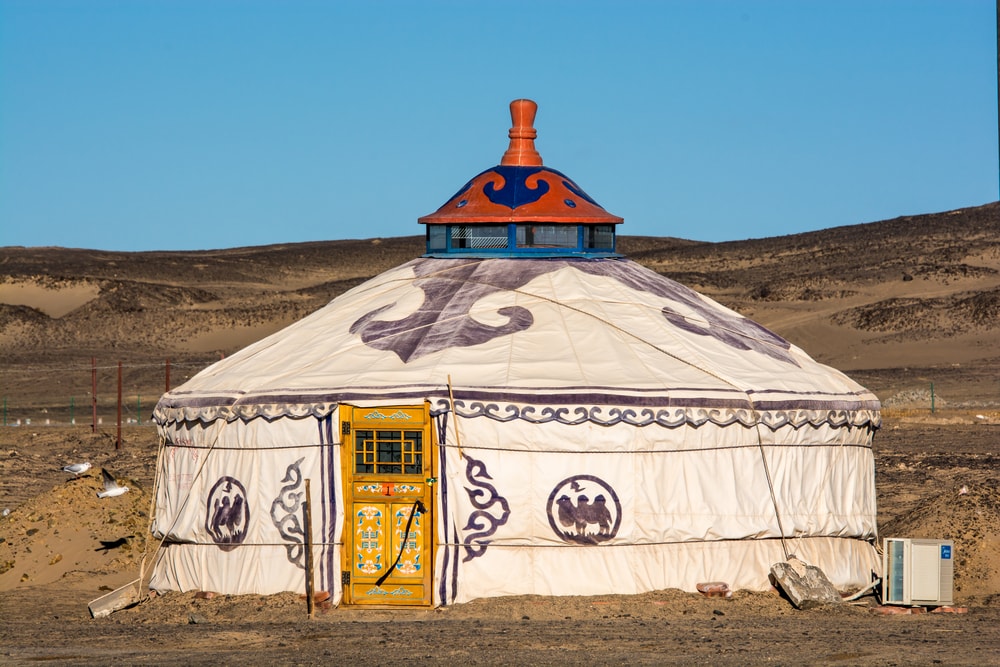
Would you rather have a more authentic experience? You can opt for a nomadic homestay with a Mongolian family. Mongolian people are famous for their great hospitality. It’s customary to offer travelers food and drink and often a bed for the night. All without expecting money in return.
It’s a good idea to give a gift, like a bottle of vodka or toys for the children, if you stay with a Mongolian family.
There’s quite a few customs and rituals to observe. Don’t panic though. Families used to dealing with tourists are forgiving if you make a mistake! Below are some useful things to know about Mongolian etiquette!
- When offered vodka, dip your left finger in it and flick it towards the sky four times, then touch it to your forehead. This honors the sky gods.
- Step OVER the door frame. If you step on it, this is viewed as “strangling” the life of the family.
- Don’t whistle in the ger. This is said to summon the winds!
- Don’t walk between the two central pillars. These represent a married couple. To split them up is unlucky.
- You are likely to be offered milk tea with salt, fried bread or milk curds. Hold your tea cup by the bottom. Make sure to try a little of each thing before putting it down.
- Go to the left side of the ger. The right side is for the family only. Plus, women must not sit at the head of the table!
Pacific Yurts
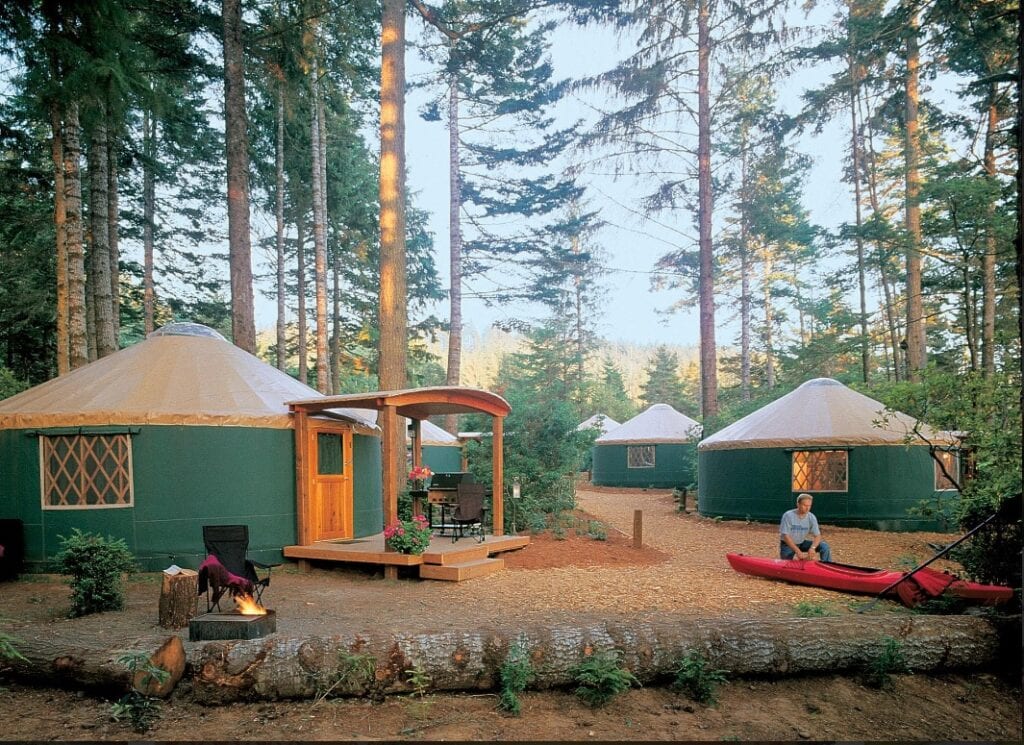
Pacific yurts are modernized versions of a traditional yurt. They have the same shape and structure, but the materials used are different. Pacific Yurts is actually the name of the first company to make modernized yurts for the Western market.
Pacific yurts make use of modern waterproof fabrics instead of animal skin and felt. This is great if you’re vegan!
The skinned willow roof poles are replaced with kiln-dried, stress-rated Douglas fir. A solar arc skylight allows in natural light or allows visitors to see the stars. Reflective insulation developed by NASA is used instead of felted wool.
Last but not least, the woven fabric tension band is replaced with an aircraft strength cable!
You may also like: Ultimate Camping Checklist – Complete Guide To Everything You’ll Need + Printable PDF
How Much is a Yurt?

How much you would pay for a yurt depends on the size and quality of the yurt.
As a rough guide you can expect to pay between $4815 for a tiny yurt of 12ft (3.7 m) diameter to $42,135 for an extra large 30-50ft (9.1-15m) yurt. A medium sized 16-20 ft yurt will cost on average $7,825.
These prices are for new yurts, by the way!
Second hand yurts can be found for around $3000 to $6000.
What Are Yurts Traditionally Made Of?
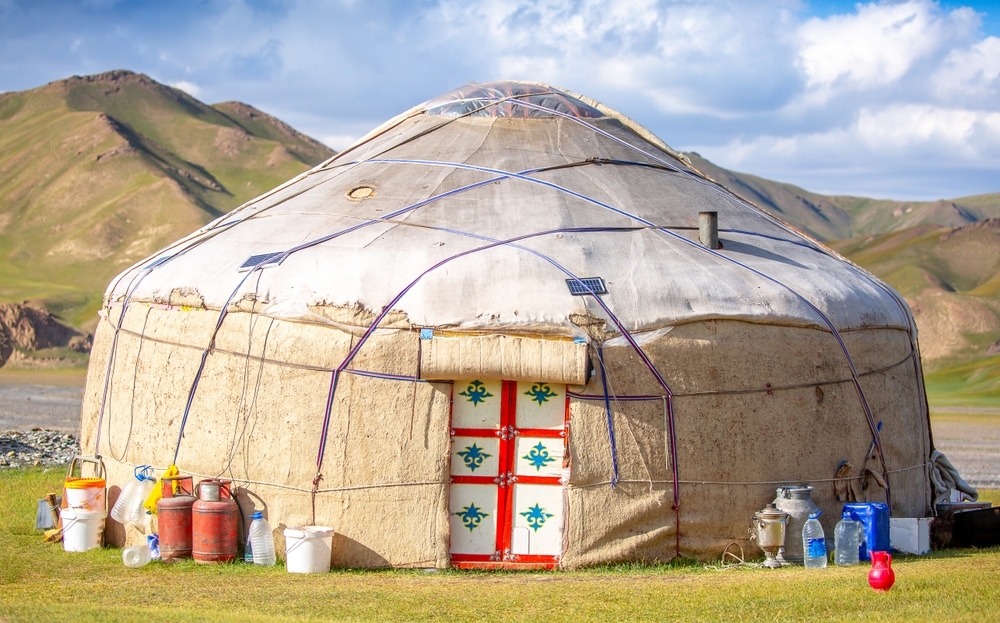
Wood
Traditional Mongolian yurts are made of a wooden crown, which is a durable wooden ring that poles are slotted into to form the roof. Wooden poles radiate out from the crown. A lightweight lattice made of wood is bent around in a circle to form the walls.
Wool felt
Over this is 3 to 5 layers of thick wool felt. Felt is wool that has been compressed and rubbed until the fibers bind together in a dense layer.
Cloth
The tension band runs sound the yurt and holds the poles in place. It is made of woven cloth or rope.
How Is A Bentwood Yurt Made?
I have been fortunate enough to see a bentwood yurt being made. Not by Mongolian herders, but by a yurt maker from Dorset, UK! He showed me how he steams the poles to bend them, with a contraption made out of a barrel, steam and a fire.
Long lasting hardwood such as oak is used for the crown and the poles, which need to last a long time.
Check out how a red oak plank is made into a crown for a yurt from the video above.
The lattice walls can be cut from planks. In the video below, you can see how to do this from scratch using machinery such as an electric saw. The holes for the lattice to be joined together are made first and the plank is cut into thin sections afterwards.
After that it’s time to knot the thin sections together to form the lattice. The video above shows how to make the special tight knots that you need. Paracord will work well, if you haven’t made rope out of horsehair!
If you’re really making it from scratch, that will include felting the sheep wool to make the wall and roof coverings!
Check out this tutorial to learn how to knot a yurt lattice,
Making Felt for a Yurt
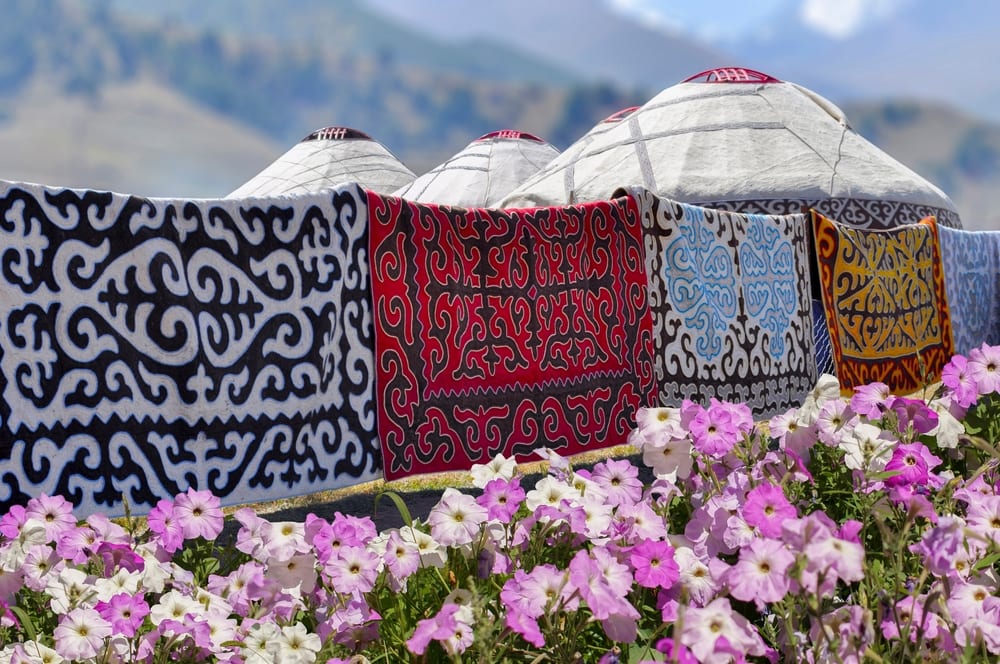
Yurt felt was, and in many cases still is, traditionally made by hand. Felting by hand is great exercise! If you know any small children, this is a good way to exhaust them.
The handmade felt for a Mongolian yurt is made by:
- Shearing the sheep
- Drying the wool
- Spreading the wool out in an even layer
- Wetting the wool
- Blessing the wool!
- Rolling it up by hand with several friends
- Tying it to a rope and getting a horse to drag it along until it’s felted!
If you’re lucky enough to own a horse, you can try this method of wet felting. Otherwise it’s a lot of work for several people to keep rolling the wool til it binds and forms felt!
You may also like: Camping Rules: Does Camping Have Unwritten Rules?
How Do You Put Up And Take Down A Yurt?
A large Mongolian ger can be taken down in an hour and loaded onto two or three pack animals. That’s if you’re a Mongolian nomad with plenty of experience. In reality, you may take a little longer!
Check out this video on how to build a 5x5m (16.5×16.5ft) Mongolian yurt!
- Make a flat surface 5m (16 ft) in diameter.
- Find at least two of your friends to help!
- Get the sections of the lattice. They will be rounded at the top and flat at the bottom.
- With one person holding the door up, the other two people pull out the sections of lattice in a circle.
- Slot the lattice into the sides of the door. Lock the two sections of lattice together and tie with cordage, lacing from top to bottom.
- Run a tension band from one side of the door to the other, attaching to pieces of cordage made into loops.
- Tie two support posts to either side of the crown while it’s one the floor.
- Raise the crown and make sure it is dead center of the yurt.
- With one person holding the crown up, the other people start slotting the roof poles into the crown and on top of the lattice. Leave the door poles til last – these are slightly shorter.
- Roll over the interior cover – this is made of light cloth such as cotton.
- Roll the roof sections of felt over the roof.
- Tuck the wall sections of felt under the roof felt, all the way around the yurt. Secure lapels with rope if there are any.
- Roll the waterproof top layer (heavy canvas or similar) over the top of the felt.
- Fasten all the straps of the cover to the crown.
- Tie the tension bands around the yurt sides and tighten. Make a loop 1m (3.2 ft) from the door and double the strap back on itself to do this.
- Tie extra tension bands vertically over the top of the yurt and tie off at the base.
You may also like: 11 Coolest Types Of Tents
Which Countries Can I Find Yurts In?
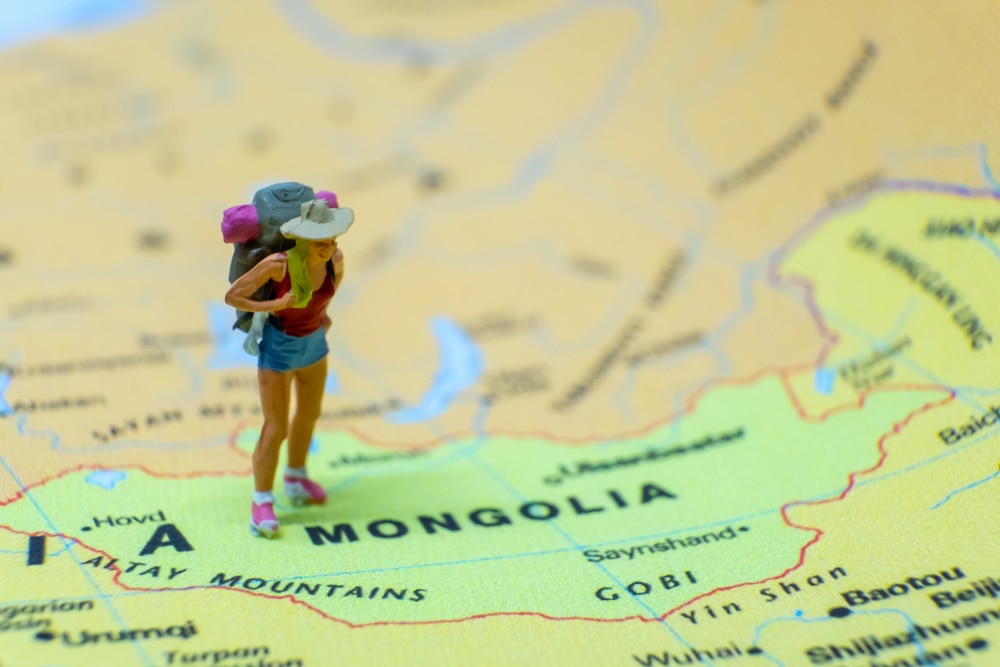
Aside from Mongolia, yurt culture spread into Turkey and Hungaria when the Mongol Empire expanded. People still live in yurts in some parts of Turkey. Siberian nomads use yurts in Russia when they are reindeer herding.
In Central Asia, Iraq and Iran, people live in bentwood yurts. Nomadic peoples of Kazakhstan, Kyrgyzstan, and Turkmenistan also have a tradition of living in yurts.
Modern yurts can be found in many backcountry settings in the Western hemisphere – North America and Europe, and the UK as just a few examples.
If you want to stay in a yurt, you’re spoilt for choice, with many glamping holiday providers and campsites offering stays in yurts.
Mongolia remains the best place to find yurts. Even in the capital city, Ulaanbaatar, 61% of the population live in gers! Out in the countryside, 90% of Mongolians live in ger yurts.
Ulaanbaatar’s Ger Yurt District
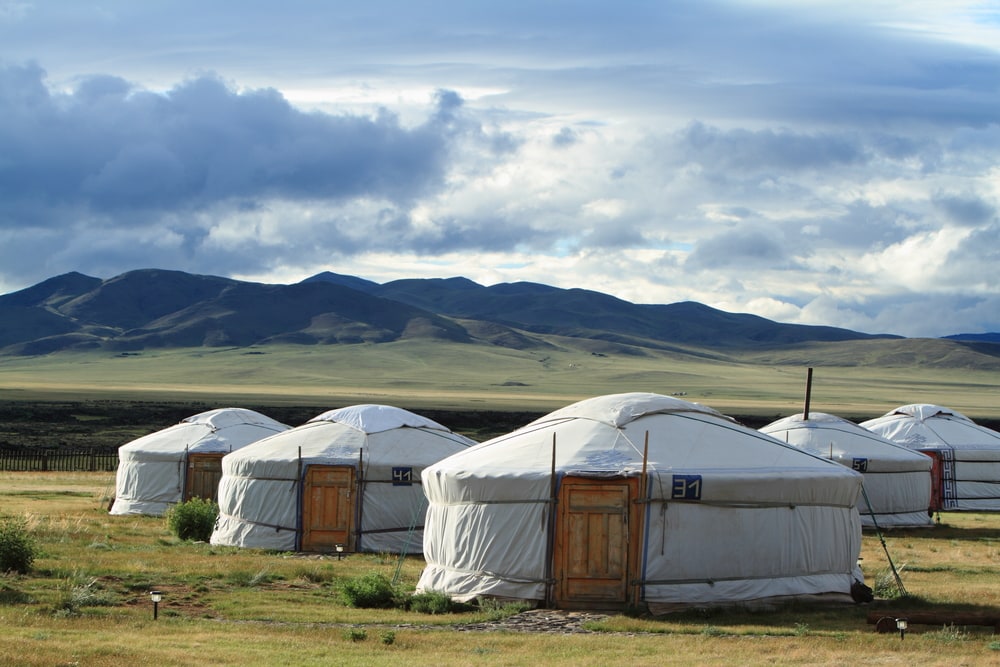
In the Mongolian capital city of Ulaanbaatar, you can find an enormous sprawling district dedicated to the 60% of city residents who live in ger yurts. That’s 200,000 separate dwellings.
The pros – People living in yurt districts enjoy a much more sociable lifestyle, with communal bathhouses, toilets and shared facilities. Gers are loved and cherished homes and part of the national culture.
The cons – Ulaanbaatar is the coldest capital city in the world. All of the yurt dwellers burn unrefined coal to keep warm as they are not connected to a gas or electric grid.
This has caused massive problems with air pollution in the city. It is one of the most polluted cities in the world. They also have inefficient sewage disposal.
The solutions – The University of Pennsylvania is working with funding from non-profit GerHub to design yurts with improved insulation and thermal capacity.
Funding from the World Bank and Millennium Challenge Corporation has provided stoves with better efficiency and cleaner burning of coal.
Some residents are moving into brick and mortar homes with plumbing and energy services. Most Mongolians, however, would rather stay in their yurt.
Ulaanbaatar is a great place to go if you want to see lots and lots of yurts!
You may also like: How To Make A Camping Tent From Scratch: An Emergency Shelter, or For Fun
How Long Can You Live In A Yurt?
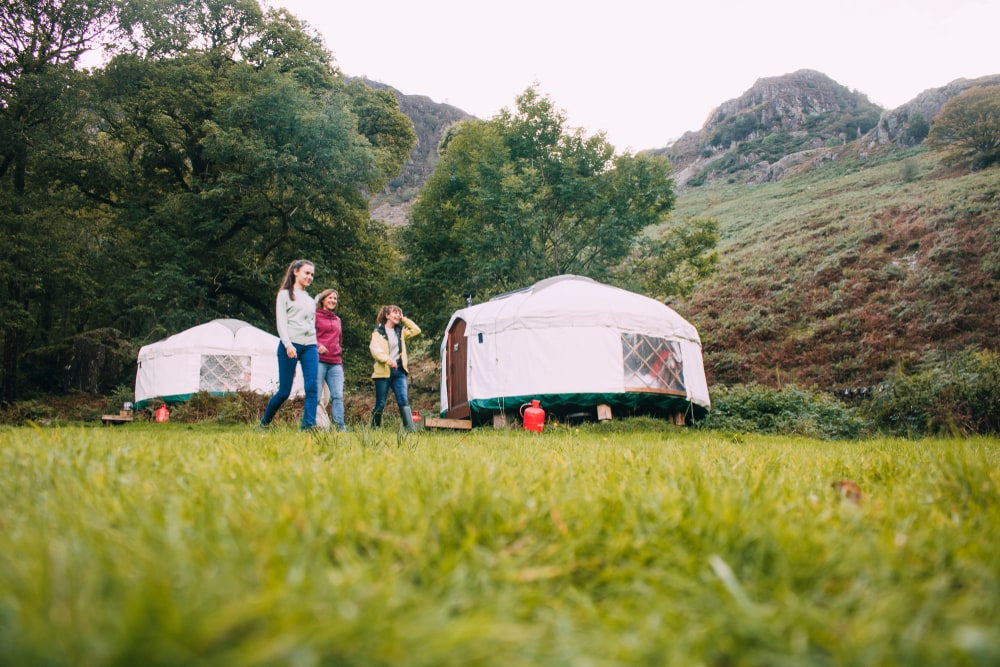
Yurts are traditionally temporary structures. There’s no reason why you can’t live in one permanently, however, if you have planning permission to stay on the land. You’ll also need access to sewage and water facilities!
In some areas, you can live in a yurt for 28 days a year without informing the council. Otherwise you will need to apply for a change of use for the land.
As they are made of canvas and soft wood, yurts can decay if they are not looked after. The canvas on a yurt in damp woodland can rot in just one year if the yurt is unheated. Living in the yurt with the stove on is the best way to keep it in good condition. Re-oiling the wood with linseed oil will make it last longer.
Sunlight and UV rays are actually more harmful to yurt fabric than damp! Siting a yurt in the shade will help it last longer.
What Can I Expect To Find In A Holiday Yurt?
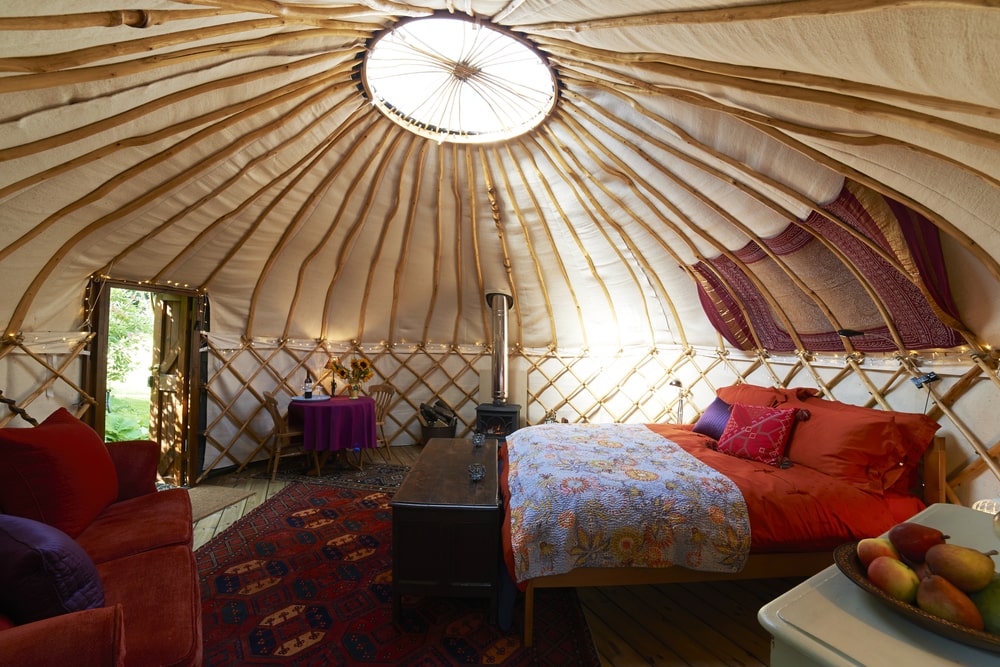
Okay, so you would rather not have to build your own yurt from scratch. You do, however, want to try yurt life! Check out what you can expect to find in a yurt below.
Modern holiday yurts bring you closer to nature and can be sited in the middle of a quiet wood or beach. They often include modern conveniences. Here are some of the lovely finishing touches you can find on a yurt holiday!
- Hot tubs
- Movie rooms
- Fridge
- Solar powered showers
- Proper beds
- Compost toilet
- Wood stove
Many holiday yurt providers let you bring pets, though you may have to pay a deposit for accidental pet damage.
Yurts are great places for a romantic getaway, with tranquil, private locations and no light pollution so you can see the stars. They’re good for families too, with lots of open space in nature outside and space for communal board games and cooking.
Don’t expect to play your computer games all day though. Yurts may have solar panels, but they aren’t often connected to the electricity grid. The point is to be close to nature, so leave those energy hungry appliances at home!
Wood Stoves in Yurts
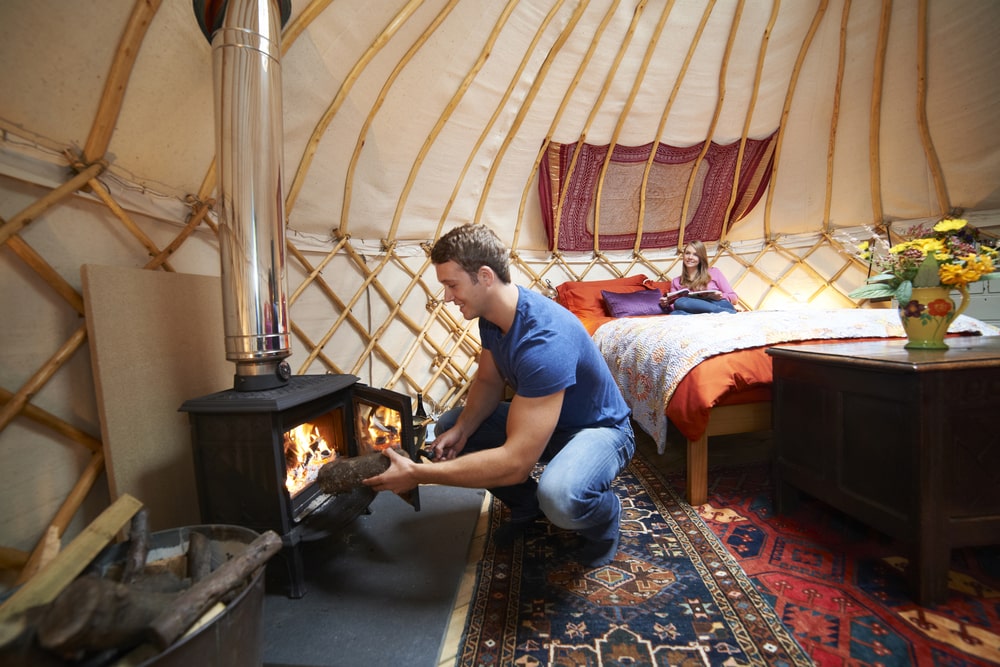
One of the best things about staying in a yurt is that you can have a wood stove in it.
You can have a stove in some tents too, but they’re not as well insulated. There needs to be space around the chimney in a tent for flame-retardant materials such as a pipe jack.
A centrally placed stove means everyone in the yurt gets equal access to the warmth of the fire. It can take a bit of getting used to if you don’t normally use a stove. Most of the time yurt holiday providers will be happy to show you how to use the stove.
Lighters, kindling, and larger cut logs for burning are usually provided.
Cooking on a yurt stove
You can fry things on top of the stove, boil water, stew and soup, and toast scones and crumpets. It’s possible to cook a small roast dinner on the stove. I have cooked one before by wrapping vegetables and chicken pieces in foil and cooking them in the ashtray below the fire!
If you have any chestnuts, you can also bake them in the ashtray. Just be sure to prick them with a fork first! I forgot to do this once, and they exploded.
You may also like: How To Build A Permanent Shelter In The Wilderness
Staying In A Ger Camp
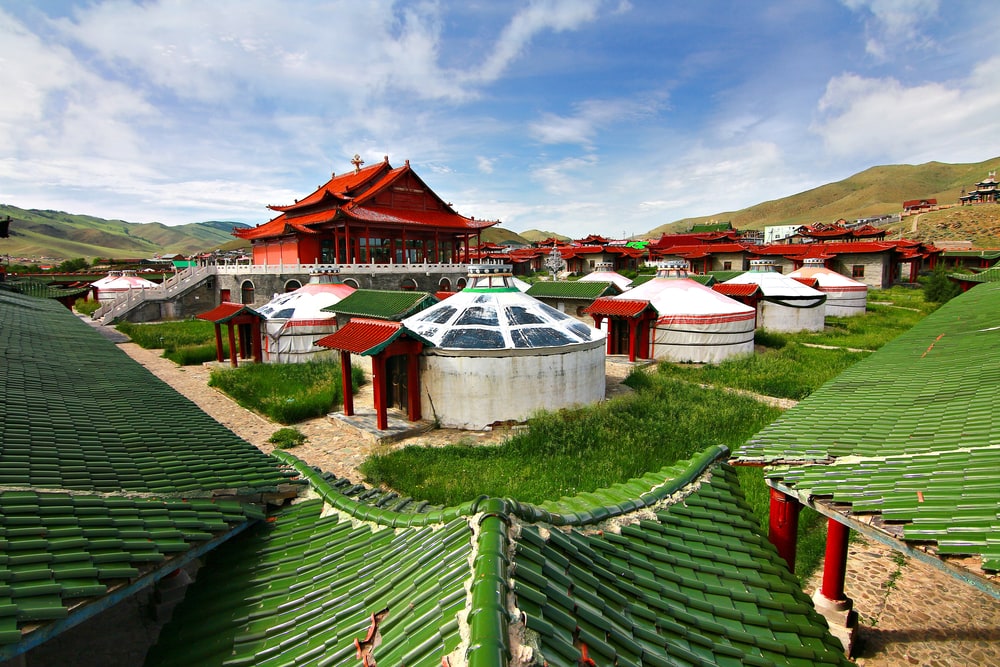
If you would rather have some Western comforts, you can stay in Mongolia in a ger camp. Here, you can stay on the steppe in a traditional ger. However there are such luxuries as hot showers, bars and restaurants included. The restaurants serve both Mongolian and European food.
Ger camps are gaining in popularity as more people want to experience life in a ger and on the windy, wild steppe. They are positioned close to landmarks and tourist hotspots.
There are some things you might not have. Wifi is one of them, especially at more remote camps! Hot water may only be available at certain times of day. Electricity is limited and supplied by solar panels or generators.
You may also like: Stress-Free Camping: Fast Pitch Tents Vs. Instant Tents
Great Yurt Stays Around The World!
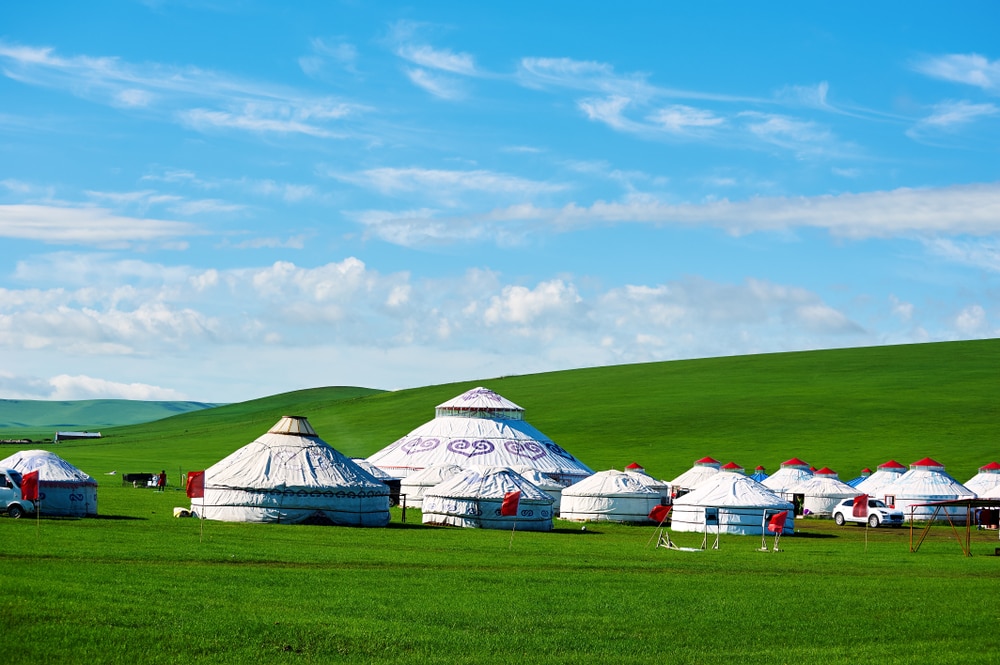
So you want to try out the yurt life? Here’s some of the best places in the world to go yurt camping.
- Treebones Resort, California, North America – with spectacular views over the California coast, these yurts are great for couples or families with kids over 13.
You can do hiking and whale watching, then relax with some yoga or a massage after. There’s a restaurant and a sushi bar with a 15 course tasting menu! - The Aurora Yurt, Alaska – watch the Northern Lights from this luxury yurt. There’s 3 bedrooms, 1 bathroom and a hot tub, so you can share with friends or family.
There’s a coffee maker, television and even bear mace in case a bear comes too close! There’s no light pollution, so great for stargazing.
- Heishantou, Hulunbuir City, Mongolia – this is one of the best places to rent a yurt in Mongolia. The yurts are above the standard you find elsewhere.
It’s close to a horse ranch where you can learn how to ride a galloping horse Mongolian style, too! Other activities in the yurt camps include whistling and a bonfire party!
- Yurt Camping, Zala County, Western Transdanubia, Hungary – this is one of the more modestly priced yurts. It’s near Lake Balaton and a great place for hiking.
There are more deluxe yurt options in Hungary too. This area is good for fishing and horse riding.
- Yurt Yoga Retreat, Fethiye, Turkey – This is a pricey option, with a dedicated yoga school. The Turkish chef prepares local cuisine. The yurt sleeps 4 people. You’ll be on the lovely warm Mediterranean coast, great for swimming and canoeing.
You will notice there’s a lack of hot countries here on the yurt bucket list. Yurts are best for cold to temperate climates, and places with a lot of wind.
Their insulated walls are too warm for places like India! In these places, you’re more likely to see circular tents with light fabrics instead.
Yurt FAQs
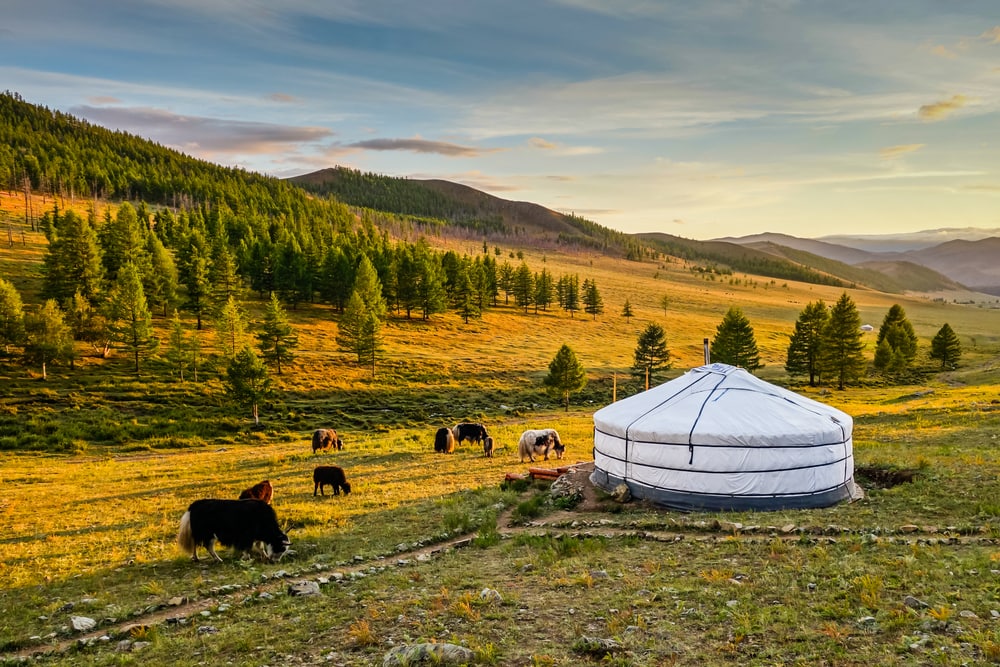
What’s the difference between a tent and a yurt?
A yurt has wooden lattice walls and a strong, insulated structure. A tent, even a yurt shaped tent like the bell tents that are so popular, doesn’t have the wooden lattice walls. It’s held up by guy ropes and poles instead.
Can I cook in a yurt?
You can definitely cook in a yurt! As long as there is a closed stove with a chimney that leads outside! Some yurts have the stove and chimney in the center, while some have them nearer the front.
You can cook griddle cakes on top of the stove, and boil tea and soup. You can even roast and bake with an integral oven!
How do yurts hold up in storms?
Due to their streamlined shape and sturdy construction, yurts hold up very well in strong winds and rain. There are very strong winds on the exposed grasslands of Mongolia where yurts are used.
Pacific yurts can be engineered to withstand winds of 142 mph (228 km) and snow weight of 100 pounds (45 kg) per square foot!
Why are yurts so popular?
Yurts have cultural significance, allowing people to experience nature and nomadic culture. They are strong and waterproof in all weathers.
You can cook in them and heat them with a stove. The wood and felt makes them cozy and beautiful inside. The circular shape encourages community.
Do yurts have bathrooms and kitchens?
Permanent modern yurts can have plumbing installed for a bathroom. If they are temporary, you can use an outhouse or composting toilet that is separate from the yurt structure. You can install a gas kitchen with a gas bottle outside the yurt. Though the wood stove is a lot more fun!








